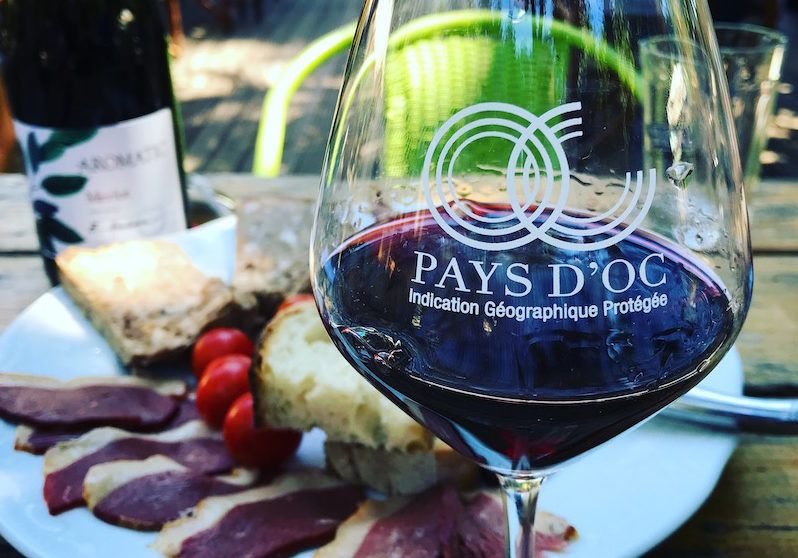Pays d’Oc is so vast it accounts for 6 million hectolitres of wine each year, with 28 million bottles of it imported into the UK
Gilles Palatan, owner and winemaker at Domaine D’Aigues Belles, tells a story of how his top cuvée L’Insolent was born. 10 years ago he was exhibiting his wines at a tasting in London’s Saatchi Gallery; it turned out that he was the only Languedoc producer showing his wines alongside many blue chip Bordeaux producers. During the course of the tasting he asked some serious customers what they thought about his wines.

Gilles Palatan, owner and winemaker at Domaine D’Aigues Belles: a middle finger to wine snobbery
“They’re delicious but they’re too cheap,” came the reply before they moved away to spend ten times the amount at the other tables.
Palatan’s response? To come up with a price (€46) for a new wine and then the wine itself – the grape varieties change every year with no indication on the label – and then the name L’Insolent which translates as ‘The Insolent one’. The wine sells out on release.
What is one man’s ‘middle finger’ to wine snobbery encapsulates one of the major strengths of the wines of the Pays d’Oc region – freedom of expression. When Palatan regenerated the winery in the early 2000s it was with the idea of making just one red wine – a blend of Syrah, Grenache, Cabernet Sauvignon and Merlot.
“I am surrounded by Pic Saint-Loup and I wanted to do different things,” he says, crediting as an influence Domaine de Trévallon, which famously declassified itself as Vin de Pays in order to blend Cabernet Sauvignon and Syrah in Provence.
Tasting through the seven main wines that Domaine D’Aigues Belles produces, it is noticeable how much the blends vary year to year – both in percentage terms but also in using different grape varieties.
“The problem with Pic Saint-Loup is that you have to have 50% of Syrah, so ultimately the wines start being the same, and anyway I prefer my reds to have 50% Mourvedre. When I started I wanted to make different wines from my neighbours but with the AOC system there is no choice.”
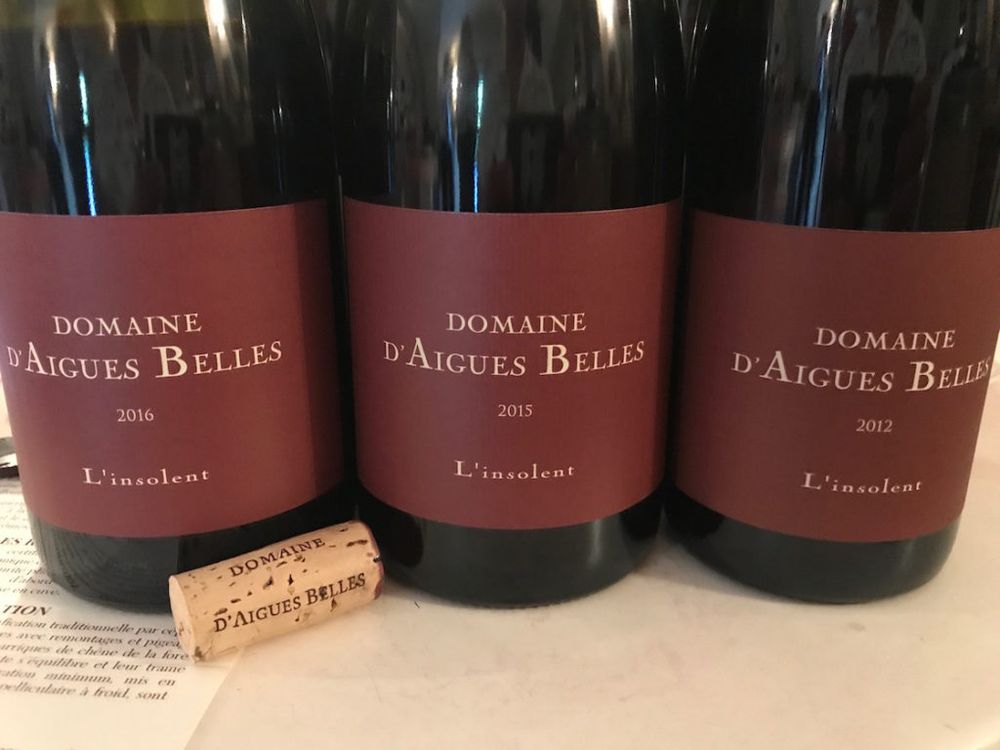
Palatan’s top cuvée – one year it can be 100% Merlot, the next 100% Grenache or 100% Mourvédre – but the label stays the same
The downside for Palatan and one suspects for many more wineries releasing Pays d’Oc IGP wines is that with an AOC like Pic Saint-Loup it is easier to charge higher prices.
“I am very small and I can do what I want but the problem is that you need to be able to charge proper prices and be well known.”
Getting to grips with the sheer scale of the Pays d’Oc region
Pays d’Oc or, to give it its full moniker, Pays d’Oc Indication Géographique Protégée (IGP) is by far and away the largest of France’s IGPs, in fact 93% of all French IGP varietal wine is Pays d’Oc. IGP, incidentally, is a territorial product designation rather than a terroir one – AOC – where every stage of manufacture has to be done within a specified region.
Pays d’Oc is a vast French IGP which covers roughly the entire Languedoc-Roussillon region and accounts for half the hectarage of Languedoc-Roussillon and just under half of its total production of 12.6 million hectolitres.
Contrary to some misconceptions, Pays d’Oc does have rules and regulations but they are so much looser than the far stricter and terroir-limited AOC rules that, comparatively speaking, ‘anything goes’.
There are restrictions on important factors such as yields, but it is up to the winemaker if they want to blend different varieties at whatever percentages they choose or use parcels of grapes from across different parts of the region. It is a system that has historically given rise to commercial wine production on a massive scale (it is home to some of France’s largest cooperatives, 175 in total), but it also facilitates artisanal wine production like Domaine D’Aigues Belles whose annual output is around 100k bottles per annum.
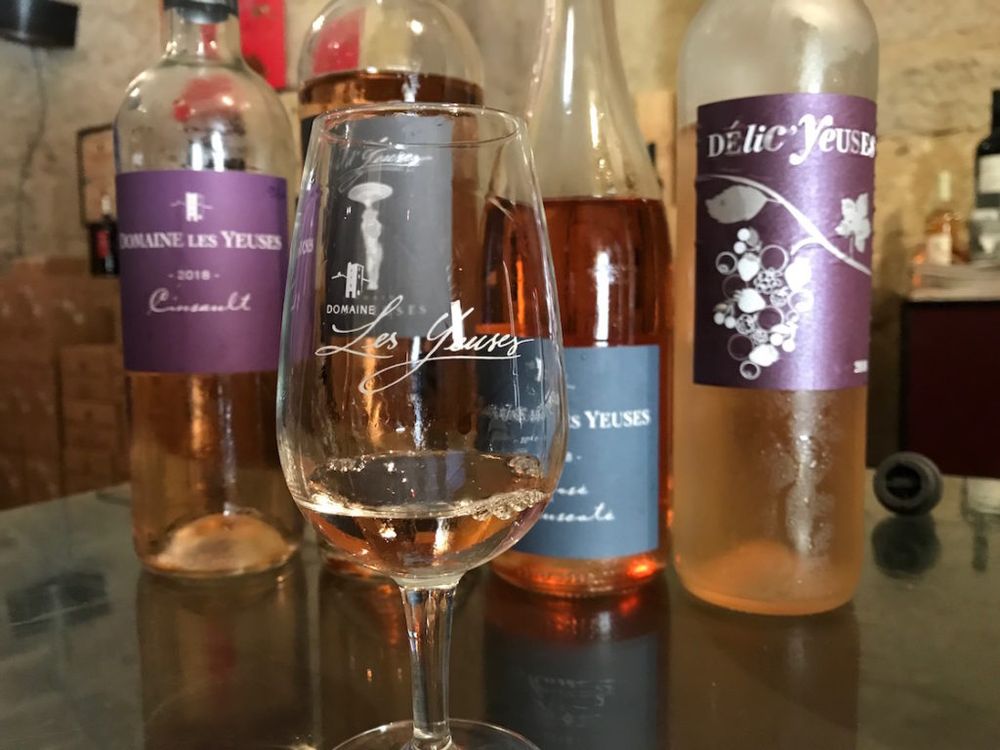
Domaine Les Yeuses makes 23 wines – 13 single cépage and 5 very individual and different rosés
Three other key factors to consider when understanding Pays d’Oc stem from the IGP’s relationship with the Languedoc-Roussillon – climate, terroir and history.
The Languedoc-Roussillon has such an excellent climate and diverse range of terrain that almost every kind of grape can ripen here. The amount of varieties that winemakers can choose from under the IGP regulations is a staggering 58 varietals with grapes as diverse as Tempranillo rubbing skins with Riesling and Pinot Noir.
This climate, combined with the excellence and variety of the terroir, means that winemakers can very reasonably choose to make an IGP wine rather than an AOC one, especially when AOC laws are far more restrictive – it’s one of the reasons that IGPs flourish in the Languedoc-Roussillon where there are a third of France’s IGPs. For the winemaker this flexibility allows ‘painting from an enormous palette’.
How the rules allow winemakers’ individual expression
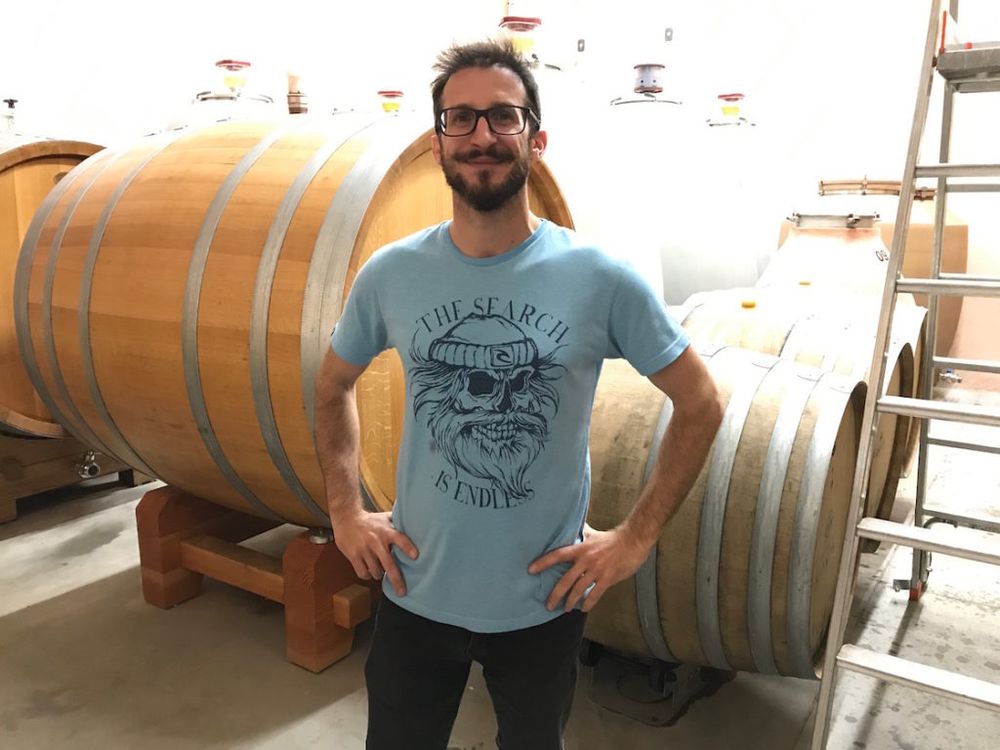
“Here I feel free to create my own story”: Vincent Chansault, winemaker at Domaine Gayda
Vincent Chansault, winemaker at Domaine Gayda, which is based in the Malpere region of the Aude, calls Pays d’Oc “an Eldorado” for winemakers.
“We have a perfect climate that adapts to almost all grape varieties, so I can choose the varietals with which I have real affinity, I am not limited. And with these grapes I can make wine in a single variety ie 100%”
Chansault is also able to blend parcels of grapes from different areas in order to achieve the balance of acidity and flavours that he is looking for.
“Personally, I have a real affinity with Syrah, but the wine will be different depending upon where I plant my Syrah: at altitude it will give very peppery aromas while here on the hill it will give much more fruity aromas … so here I feel free to create, to write my story.”
Single varieties plays into the hands of the younger wine consumer
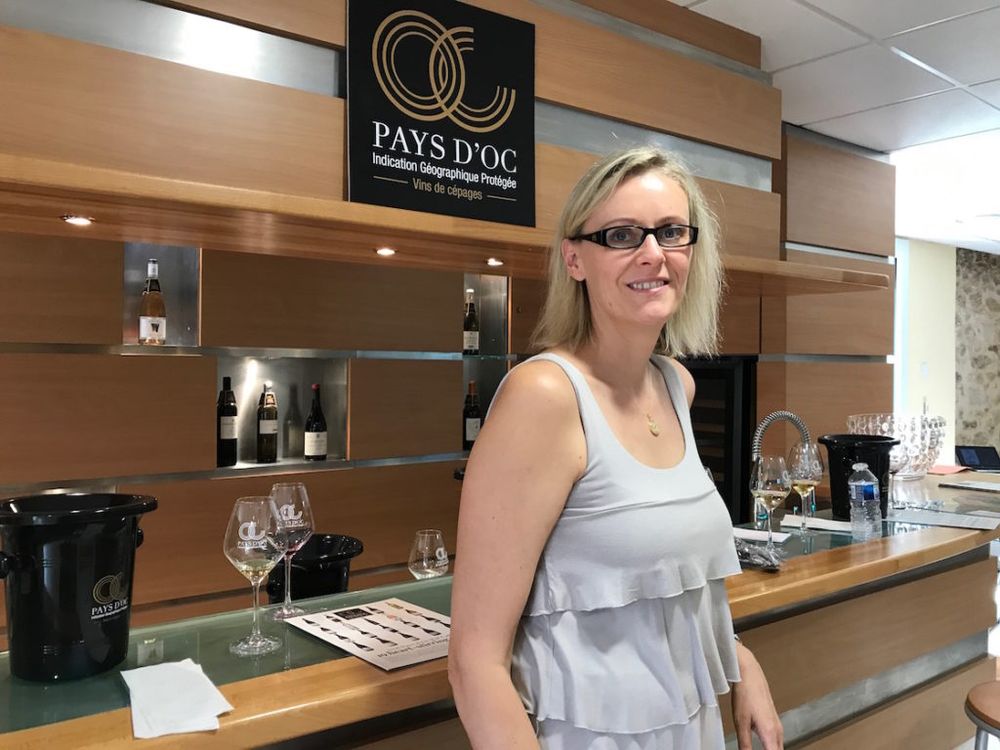
“A younger wine demographic understands cépage more”: Delphine Lorentz, communications manager at Pays d’Oc’s trade body
The Pays d’Oc trade body has adopted the phrase ‘Liberty of Style’ to try and encapsulate what the IGP stands for.
“Pays d’Oc is the land of freedom offering to each producer the possibility to express his or her identity of style,” says Communications manager Delphine Lorentz.
This ‘Liberty of Style’ allows all sorts of blends but crucially allows a winemaker to produce 58 different cépages – single varieties – if they so choose. Given that this is now the primary way that consumers choose a wine, in Britain at least, releasing single varieties means that Pays d’Oc wines can get around one of the downsides of this creative freedom; that is, by making such a vast array of different blends – customers can get confused about what a Pays d’Oc wine might taste like.
Making single cépage wines is also paying off in the domestic market says Lorentz, where sales of Pays d’Oc wines is on the rise. Where 70% of Pays d’Oc wines used to be exported from France in 1988 today’s figure is considerably less at 48%.
“This represents more of a change in the French market where a younger demographic is coming in and it is easier for them to understand cépage,” she says.

Bruno Andreu has different sets of labels for whatever country he’s exporting to – here are the ‘fancy’ labels for the Belgian market
But it’s not just the French and British who understand cépage when it comes to buying wine. For winemaker Bruno Andreu the business model of his new negotiant venture is completely driven by this fact. All of the fruit for his wines is bought in and 95% of the wines are exported.
Andreu, who made his name at Château La Condamine Bertrand, is so focussed on exports that each territory has bespoke labels – the range in the UK has flora and fauna on the label to help bring out key notes of the grape variety; while in Belgium the same wines have a calligraphic style to make the wines look ‘fancy’ because that’s what the wine importers there are requesting.
Andreu also has some top blends such as Elixir that are labelled ‘Iconic’ and serves, like the other premium cuvées produced in the region, to create a halo effect on the rest of his portfolio.
Why Pays d’Oc is the ‘new California’

The terroir, climate, relative low cost of land and lack of AOC restrictions in the Languedoc-Roussillon made an attractive proposition for the establishing of new wine estates
And it is this concept of ‘land of freedom’ that is the third factor so key in Pays d’Oc’s modus operandi. In fact freedom is a fundamental part of the region’s history, as it is a key tenet of the French psyche.
Although evidence of winemaking dates back many centuries and it has long been an important winemaking region, the Languedoc-Roussillon as we know it today only really started taking shape in the 1960s with an influx of foreign investment and knowhow – French being forced out of North Africa, and arrivals from New Zealand, Australia, the US and the rest of Europe. At a presentation at trade fair ViniSud two years ago Elizabeth Gabay MW likened the region to “a new California.”
The terroir, climate, relative low cost of land and lack of AOC restrictions made for an attractive combination – if you were going to set up shop in France as a new wine estate, without already owning your own vines, then the Languedoc-Roussillon was an attractive place to ‘set up shop’.
Domaine Gayda’s co-owner Tim Ford moved to the region after fleeing Zimbabwe and in just 15 years has built up a business that’s turning over €5m a year, with a large percentage of that using bought-in fruit. For the region’s standard bearer Gérard Bertrand whose group’s annual turnover is $150m – 90% is bought-in fruit and (remember) he only formed the Gérard Bertrand wine company in 2002 having taken over the family estate five years earlier.
So there are clear parallels with the Californian wine boom here.
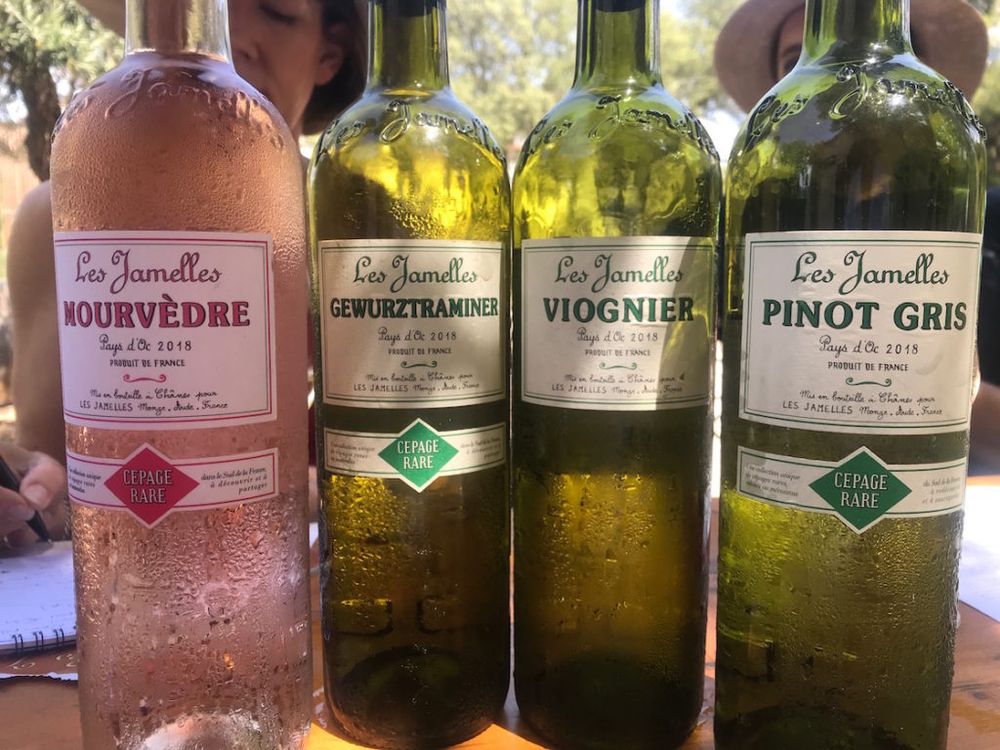
Les Jamelles’ cépage range offers wines that are reflective of their grape varieties at a modest price. And no, we don’t know why they called Mourvèdre ‘Rare’ on the label either!
Drawing some conclusions about the wines of Pays d’Oc
From a short press trip last month and knowing the area personally there are many reasons to get excited about the wines of Pays d’Oc.
Premiumisation is definitely a thing here – and not just that the quality of the entire IGP is moving upwards. Pays d’Oc as a region does have its fair share of premium wines such as Gayda’s Chemin de Moscou which sells 120,000 bottles a year (€21 consumer price at cellar door) and is a regular awards winner. These wines are making a name for themselves out of sheer quality, value and reputation. A tasting of the IGP’s 19-strong 2018 Collection was impressive (see here). In the 2019 collection there are 51 wines. Oh and Bertrand’s l’Hospitalet 2017 just won the coveted title of ‘World’s best red wine’ at this year’s IWC awards. All of this brings a greater cachet to Pays d’Oc as a brand.
At the other end of the spectrum the single varietal ranges we tasted on the trip, particularly at Gayda, Bruno Andreu and Jamelles were solid, well made wines which represent great value for money.
The Pays d’Oc rosés were also really impressive on the whole and offer a contrast to the ‘pretty-in-pink’ styles so prevalent – these are varied (from numerous different grape varieties) and can be incredibly good value. For more on these wines see the roundup that world rosé expert Elizabeth Gabay MW wrote for The Buyer which you can read here.

The wide variety of wines gives the sommelier great flexibility from straight cépage wines to the different blends
That’s not to say many of the top blends weren’t also a sommelier’s dream – they are – some of them are fascinating blends built upon this principle of ‘Liberty of Style’, and worth checking out at tastings and buyer’s trips to the region.
But herein lies one of the prices of this freedom – the customer knowing what is in a bottle of blended Pays d’Oc wine. With many producers not putting Pays d’Oc on the front label of their premium wines (it is not an IGP requirement) this problem is compounded – there is little for the customer to go on, particularly when the blends are so varied… unless, of course, the wine already has a reputation.
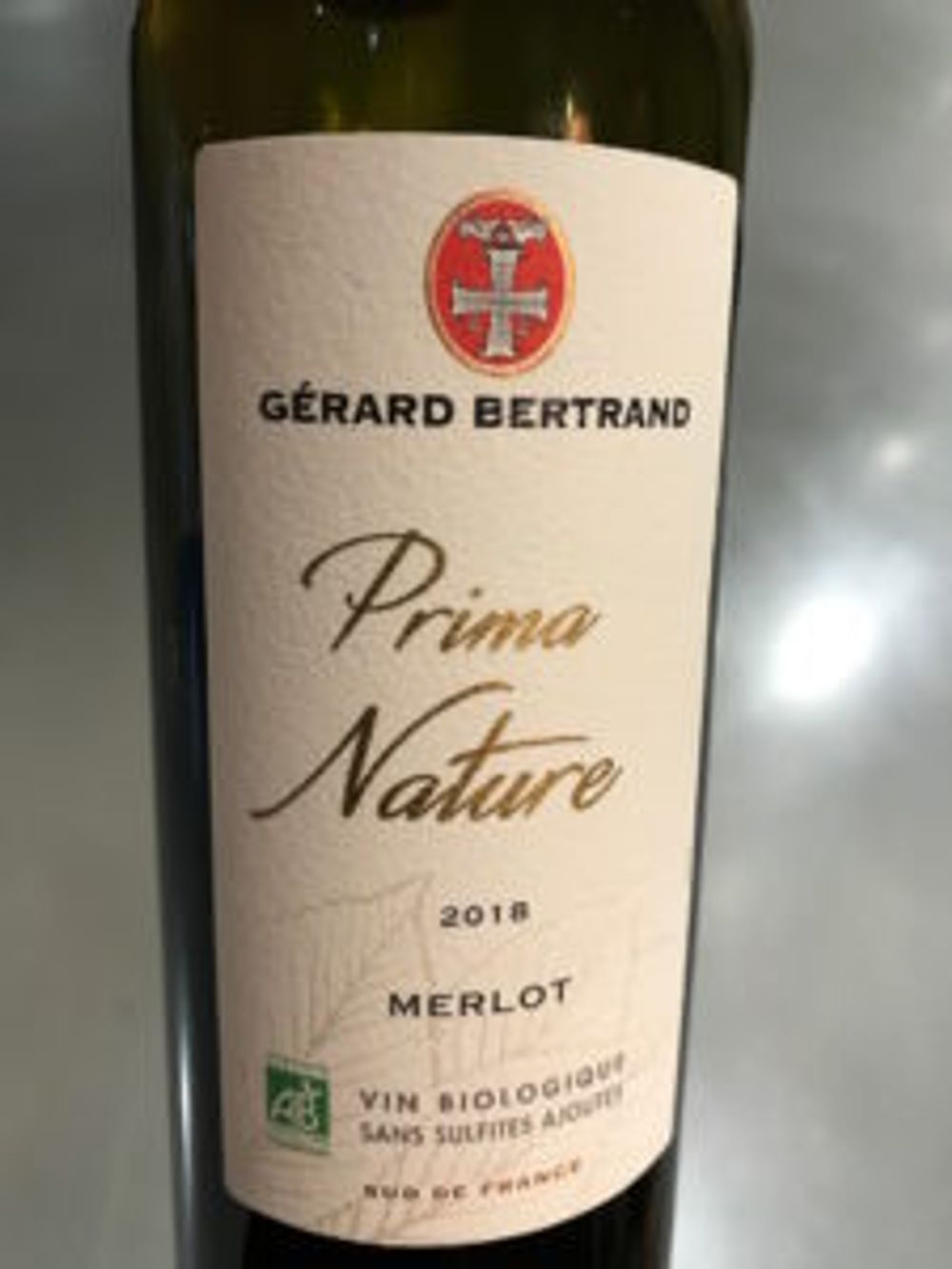
You don’t have to put Pays d’Oc on the front label. Bertrand opts for ‘Sud de France’
The IGP territory is also so confusing as a wine region. The region is so vast with 20,000 wineries, 58 grape varieties and a series of often over-lapping AOCs, IGPs and Vins de France that it is confusing to say the least – especially with wineries producing wines under all three sometimes. Some winemakers opt for putting Sud de France on the front label (Gerard Bertrand) others the name of the geographical region even though these are not strictly AOCs.
Of the 23 IGPs in the Languedoc 18 are territorial, 3 are departmental and 2 are regional – Pays D’Oc and Terres Du Midi. Would an export consumer understand this? Unlikely.
The region has come such a long way in such a short space of time, however, and looks to continue on that trajectory.
There is so much to recommend and for serious wine buyers to discover that excitement here is palpable. With one eye on the future maybe, just maybe, the region needs to sit back and ask itself – what is the one clear consumer take-home message that this region wants to project? For now Liberty of Style is a pretty accurate mantra.
